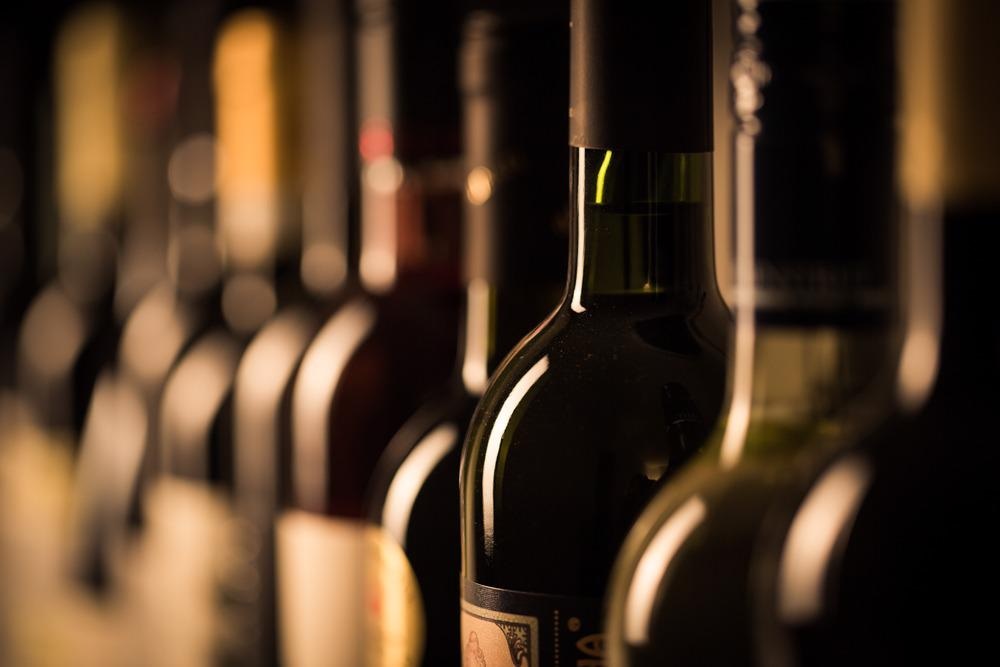Whilst 97% of the liquid in wine is water and ethanol, the remaining 3% contains thousands of discrete molecules from acids and sugars to aroma compounds and phenolic compounds. According to scientists writing in a recent special issue of the journal Molecules, features in the elemental composition of different wines are mostly related to their regions of origin.

Image Credit: l i g h t p o e t/Shutterstock.com
The Elemental Composition of Wine
The chemistry of wine is important as it helps winemakers to make sure their product is consistent and of an acceptable quality. The Molecules issue presented recent research that looked at viticultural practices (methods for growing and harvesting grapes) and enological techniques (for producing wine) and how they influence the chemistry of grapes and wines. It also featured research on the elemental composition of wines and its effect on sensory properties like appearance, smell, and taste.
Wine’s chemical makeup is determined by a host of factors. Part comes from the biochemistry of the grapes that go into it (and the soil that they grew in), part from the chemical activity caused by yeast and bacterial metabolism during various stages in the winemaking process, part from further chemical changes that occur during maturing, aging, and after bottling, and finally from chemical changes that occur when “breathing,”, pouring, and drinking the wine.
Wine chemistry is even helping committed winemakers to discover old winemaking techniques, grapes, and vineyards to recreate long-forgotten wines.
Instrumental techniques today can gather combined information from multiple sources on the wine matrix with the metabolomic approach combined with chemometrics. Rapid, nondestructive testing instruments based on spectral measurement have also recently come into fruition, enabling much higher resolutions and scalable capacity for chemical studies of wine both in research and industry contexts.
Elemental Differences in Wine Based on their Regions of Origin
Soil composition is known to be directly related to the presence or otherwise of elements in wine made from grapes grown in that soil. This means that chemical analysis of a finished wine product can reveal information about its region of origin by discovering what kind of soil its grapes grew from.
Already, scientists determine the concentration levels of certain metals to identify a wine’s origin (as well as other alcoholic beverages). This practice is used by testers to determine authentic wines that actually come from the regions advertised on the label. Sometimes, merchants can bottle wine of a particular grape from one (less desirable) region and label it as being wine from the same grape but from the more desirable region. Chemical analyses can spot this fraud.
However, there is as yet still not enough data about different wines’ elemental compositions to accurately spot-check wines and compare with an existing dataset. To tackle this problem, researchers identified the presence and concentration of 28 different elements in 180 wine samples (79 red wines, 75 white wines, and 26 rose wines.)
How to Find the Chemical Composition of Wines
Most of the target elements were determined using inductively coupled plasma mass spectrometry (ICP-MS.) ICP-MS uses an inductively coupled plasma to ionize liquid samples, atomizing them and creating atomic and small polyatomic ions which can be detected. It is used to detect metals and some non-metals in liquid samples and has high selectivity, making it suitable for detecting metals at very low concentrations.
ICP-MS was used to determine the elements: Ag, B, Ba, Be, Bi, Cd, Co, Cr, Cu, Li, Mn, Mo, Ni, Pb, Rb, Sb, Sn, Sr, Te, Tl, U, and Zn.
Scientists also employed inductively coupled plasma atomic emission spectroscopy (ICP-AES). ICP-AES, which is sometimes referred to as inductively coupled plasma optical emission spectrometry (ICP-OES), is used to detect chemical elements as well. A type of emissions spectroscopy, ICP-AES uses inductively coupled plasma to create excited atoms and ions. These particles emit electromagnetic radiation at wavelengths that identify the element precisely. Plasma comes from a high-temperature source of ionized source gas (usually argon) and it is sustained and maintained by inductive coupling from electrical coils at frequencies in the megahertz range.
ICP-AES was used to determine the elements: Ca, Fe, K, Mg, Ti.
Finally, cold vapor atomic absorption spectrophotometry (CVAAS) was used to determine Hg (mercury) levels in the samples.
Findings: Elemental Composition of Wines by Region
The scientists found not only that wines’ regions of origins can be accurately identified through chemical analysis, but also that some regions have a more marked elemental fingerprint than others.
Polish wines in particular exhibited a strongly characteristic chemical profile due to low levels of many trace elements in its wines compared to wines from other regions.
The research also found that wine from the USA and Australia was easily identified. American wines exhibit much higher concentrations of uranium than wines from any other region, while Australian wines tend to feature strontium and manganese in unusually high quantities.
References and Further Reading
Korenika, A-M.J., D. Preiner, I. Tomaz, and A. Jeromel (2021). Volatile Profile Characterization of Croatian Commercial Sparkling Wines. Molecules. Available at: https://www.mdpi.com/1420-3049/25/18/4349
Magdalena Gajek, M., A. Pawlaczyk, and M.I. Szynkowska-Jozwik (2021). Multi-Elemental Analysis of Wine Samples in Relation to Their Type, Origin, and Grape Variety. Molecules. Available at: https://www.mdpi.com/1420-3049/26/1/214.
Disclaimer: The views expressed here are those of the author expressed in their private capacity and do not necessarily represent the views of AZoM.com Limited T/A AZoNetwork the owner and operator of this website. This disclaimer forms part of the Terms and conditions of use of this website.